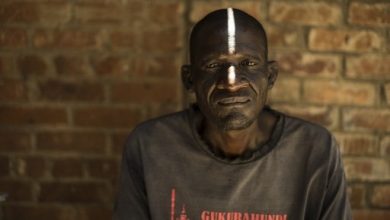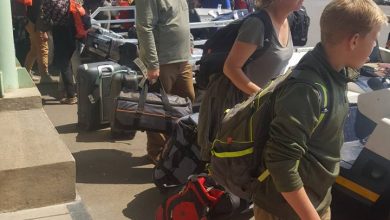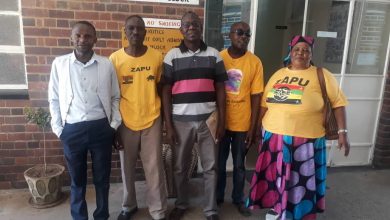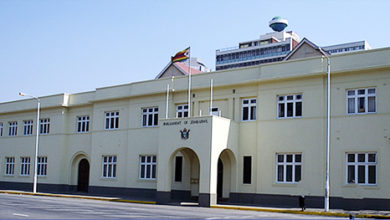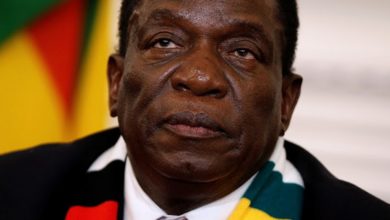ZPRA’s collaboration with ANC’s Umkhonto We Sizwe and how the Zimbabwe government chased them out at independence in 1980
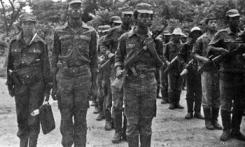
INTRODUCTION
The Alliance between ZPRA and Umkhonto we Sizwe had been going on since 1967. The ZAPU Military planning committee then code-named Special Affairs was involved in discussions to form the alliance that culminated in the first battles in the country, the Wankie Nyatuwe battles and other areas in the western part of Rhodesia now Zimbabwe.
Initially, the alliance came about because Umkhonto we Sizwe needed assistance to cross the country while on their missions to South Africa. This necessitated making a joint military unit that would be battle-ready such as what was to become Luthuli Detachment at their new camp called Dan-nang base. Initially, the camp commander of the base was Report Phelekezela Mphoko, former Vice President of Zimbabwe. Upon deployment, the new commander of the unit became John Dube commonly known as (JD) Charles Ngwenya, deputised by Chris Hani.
This would have changed if the operation through Rhodesia had been successful. This entailed theoretically that the South African unit was under Chris Hani but for operational purposes within Rhodesia, JD was in charge. The alliance between the ANC and ZAPU was solidified during the 1967/68 battles in Wankie now Hwange and Sipolilo now Guruve. However, the alliance soon face challenges that made it nearly impractical to carry out joint military operations. This did not mean that the alliance was dead in the waters of the Zambezi river valley.
Later arrangements were that Umkhonto we Sizwe would wait until we had opened fronts. The1967/68 battles drew in two of our adversaries, the South African army and the Rhodesian army to cooperate against our forces in the whole of the Zambezi Valley. The battle line was now being drawn on the Zambezi River. While Zapu had its crisis of 1971 which necessitated the reorganisation of the force, the alliance remained dormant waiting for the opportunity to avail itself. After the reorganisation, a new name, ZPRA, was adopted in 1972 and operations started across the Zambezi Valley by then the South African army was the backbone of the Rhodesian operations along the Zambezi Valley.
As time went by it became obvious that we had opened operational areas that were near South Africa and then it became necessary to assist Umkhonto we Sizwe with their operation. ZPRA had created operational corridors since 1976, operations in the south of the country from Beligwe now Mberengwa where our forces were active. It meant that operations for Umkhonto we Sizwe were now feasible without having to engage the enemy earlier than expected. The 1967 battles were so exhaustive in terms of munitions that were used and there were no alternatives to that expenditure.
However, in hindsight, they were a necessary adventure for experience in battle planning, though we lost men unnecessarily, that experience was carried over to future operations. Chris Hani and JD had gained experience on how best to deploy units to fight a guerrilla war. Later on the commanders of ZPRA and Umkhonto we Sizwe (MK) we deploying their units in small numbers as this helped the survival rate in the battlefield unlike the first of the Luthuli Detachment which was a big force and was forced to fight in tandem with tactics that befit the size of the force.
When I came into the scene later on in 1978 the route through Botswana Mpandamatenga, Nata was ripe for use to transport both our cadres and MK who would remain in the southern part of our operational area such as Brunaberg, Kezi and Gwanda, Beitbridge areas and the use of Rhodesian transport company Colley Hole that plied the route helped so much in speeding up deployments that we had in the South.
That was the time when Chris Hani and Joe Modise the commander of MK concentrated in troop movement. I found the numbers of MK rivalling our own in the field. ZPRA took command of all forces that were deployed within the Rhodesian territory for purposes of control and to avoid the enemy knowing that there were South African guerrillas within us, though that did not deter the Rhodesian special branch knowing that we had MK troops in our midst.
I recall deploying a group that had Buster Magwizi now Colonel and Skipion at a place called Vaka in Botswana and towards Tjingababili. Upon crossing into Rhodesian territory there was contact and one MK senior security detail was killed. They were never able to recover his body. Not long after the same group arrived in a place called New Line another incident with Zanla intruders in the area left one MK comrade dead whose name was Bruce and he was laid in a shallow grave just within the area. Others were killed in Gwanda and Beit bridge areas after contacts with the Rhodesian Army. There was so much cooperation between the forces for instance in Botswana we were using a land cruiser and Kombi and another small vehicle given to us by ANC for operational purposes.
MISSIONS
On conducting a specific mission, in particular, those that involved planned attacks we would occasionally exempt them as they had their specific missions inside South Africa. This cooperation between ZPRA and MK also kept the South African forces inside the country. The South African force had a base in Beit bridge east between Beitbridge and Chiredzi. They had their Puma helicopters which they used to attack ZPRA and MK cadres. We feared that the South Africans will block our MK cadres from accessing the Limpopo corridor. However, all their operations were successful.
Their commander in the Southern Front was Victor and a calm gentleman who I gather was later a Major General in the Independent South African Army. All other battles whether they were with RSF or Zanla they got involved in those battles. The alliance brought several other challenges,(a) on the MK side resupply was dependent on ZPRA’s ability to continue with the open route at Kazungula Border or the Victoria Falls area but the last days the Rhodesians tightened the grip on the road to Kazungula. This led to the capture of ZPRA senior commanders of the likes of Sibanda Mnyamana (Black Swine), Elliot Mahlola and Senzangakona Makepesi by the Rhodesian Army.
1979 saw the numbers of MK ballooning to levels that would make it comfortable for them to spring intensive operations in South Africa. They had gained operational experience and they were now able to get into South Africa and back without the loss of any of their members. This is the year that became disastrous to MK as without warning the Lancaster House talks that brought about the independence of Zimbabwe came to fruition.
This followed that MK and other ZPRA comrades had to be in Assembly points, the MK comrades could not be left outside of the Assembly Points as they would be targets if they did. Other pressing issues were that the South African Bureau of State Security (BOSS) was on the watch what ZPRA would do, and meanwhile, at independence, the South Africans were busy negotiating with Robert Mugabe who they already knew he would be next Premier of the country. They also placed a South African force to watch the assembly point at Zezani IN Beit Bridge, and the Gwaai River Mine Assembly point.
Firstly, there was fear from the South Africans that Gwaai being the last of the Assembly Point with cadres that came from Zambia in huge numbers there was a likelihood that MK was also infused within that force. Secondly, the probability that weapons could be transferred into MK hands making it possible for MK to continue covert behaviour that would be troublesome to South Africa.
CONCLUSION
I was then asked to remove MK cadres from the Assembly point Juliet in Zezani within a week and this was followed by negotiations between BOSS and Mugabe who in any case had openly declared that he would not support ANC of South Africa in a press conference with the Reuters news agency.
It had become clear that MK was not going to have bases in Zimbabwe and meanwhile the South African government was already placing a razor-wire border fence around Beit Bridge to counter any incursions from its northern neighbour, especially with the knowledge that MK was across the border.
Discussions with the Special Branch later to transform into the CIO were held in Salisbury now Harare and Bulawayo branch to remove the MK from the Assembly Point Juliet in Zezani, as the South Africans were threatening to bomb the assembly point.
The task was given to a white Special Branch officer based in Bulawayo with a nickname Mahlatini, who negotiated with me but at last, the MK were removed from the Assembly point on assurance to me that they would be returned to Zambia. I escorted them in person to Zambia through the Victoria Falls border post and handed them to the Zambian officials and MK officials unfortunately not without some incident at Hwange in which one Puma troop carrier overturned and injured, eleven of the MK comrades; luckily we did not experience a fatality in that incident.
The government of Zimbabwe after that were in pursuance of any of the hints of the availability of MK cadres in the country. This was more of a mission by the former Special Branch Officers who were now serving Mugabe’s government; we also had used all the tricks in the book to return a number of the MK cadres in the country including the commander and his deputy who we had deliberately excluded from the group that was returned to Zambia.
This can also be read in a book published in 2018 entitled “Nation Born of Violence” by Irvine J. Sibhona.


